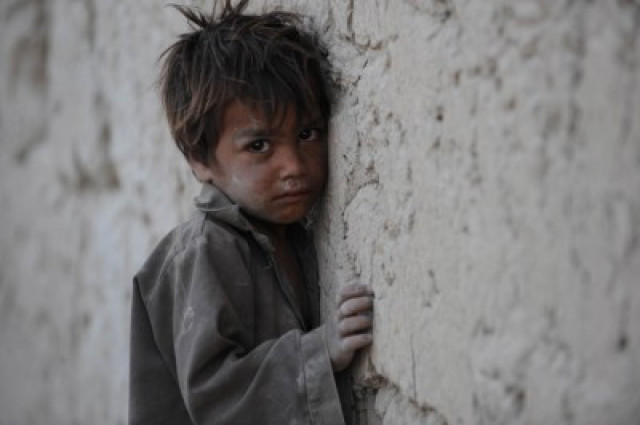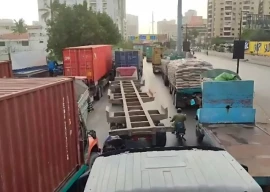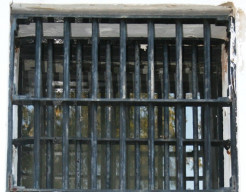
At a dialogue titled 'Right to Food Debate in Sindh-Pak', speakers identified the issues underlying food insecurity problems and suggested short and long term remedies. The Sindh Agriculture and Forestry Workers Organisations organised the event at the Indus hotel on Sunday.

Food security refers to the physical and economic access to food that meets people's dietary needs and their food preferences, according to the World Health Organisation's definition.
Dr Prof Pervez Pathan, a development expert, shared statistics of a 2012 survey regarding underweight five-year-olds in 15 districts of Sindh. According to the survey, 49.4 per cent of the children in Thatta, 49.3 per cent in Jacobabad, 48.1 per cent in Nawabshah, 47.9 per cent in Badin, 47.7 per cent in Tharparkar and 38.7 per cent in Hyderabad are below the recommended weight.
"Poverty has a direct relation with food insecurity," said Pathan. "If people are not alleviated from this state, the situation will not change."
Sindh Agriculture University's Prof Ismail Kunbhar, said poverty, health, water, environment, gender equality, disasters, conflicts, high population, urbanisation and lack of trade are the factors which contribute to the insecurity. He said two-thirds of the country's population, and an overwhelming majority of poor people, live in rural areas where agriculture is the primary engine of the economy. However, he added, this sector is stunted by challenges such as shrinking water resources, environmental degradation, deforestation, shortage of electricity, expensive fuel, over-utilisation of subsoil water, stagnant crop yields and population growth.
Sindh Chamber of Agriculture president Dr Nadeem Qamar listed crop price fixation, expensive inputs, poor water management, lack of application of modern farming and an absence of cooperative farming as the main deterrents to growth.
He complained that farmers do not get the right price for their crop, which discourages them from future cultivation of that crop. "The procurement rate of rice has remained almost static for the last six or seven years. If this continues, the growers will stop sowing rice," he warned.
Dr Qamar emphasised on the need to introduce cooperative farming under which small landowners - who have less than five acres of land - pool their resources, labour, agro inputs, water and land together. After the crop yields, they divide their earnings accordingly.
"The government should take an initiative of forming these cooperative groups, train them regarding modern technology and then arrange rented tools and tractors for them," he said. "These groups can later be used as models for other small farmers." Dr Qamar lamented that non-governmental organisations squander their resources on seminars in big hotels instead of spending them for practical purposes like training farmers.
Haris Gazdar of Leveraging Agriculture for Nutrition in South Asia claimed rural settlements are unaware of the importance of nutrition. "In one of my interactions, I asked some rural folks what is food security for them. They replied that they regard it as having enough food to fill their stomach," he said.
Published in The Express Tribune, September 8th, 2014.


















COMMENTS
Comments are moderated and generally will be posted if they are on-topic and not abusive.
For more information, please see our Comments FAQ